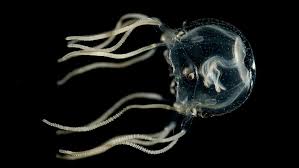Today’s Current Affairs: 27th June 2025 for UPSC IAS exams, State PSC exams, SSC CGL, State SSC, RRB, Railways, Banking Exam & IBPS, etc
Table of Contents
GLP-1 Drugs:

The Danish pharmaceutical giant Novo Nordisk launched its weight-loss injectable semaglutide, following Eli Lilly’s tirzepatide in India
- GLP-1 (Glucagon-Like Peptide-1) is a naturally occurring gut hormone (incretin) released after food intake.
- It plays a crucial role in regulating blood sugar, lipid metabolism, and appetite.
- GLP-1 receptor agonists are synthetic drugs that mimic this hormone, binding to its receptors to activate similar physiological responses.
- These drugs are mainly injectables, though oral versions are under development.
- Examples: Two leading GLP-1 drugs are:
- Semaglutide (by Novo Nordisk)
- Tirzepatide (by Eli Lilly)
- Both have been introduced in India and are transforming obesity and diabetes treatment.
- These drugs act by:
- Increasing insulin secretion when glucose is high.
- Inhibiting glucagon release, reducing liver glucose output.
- Slowing gastric emptying, preventing sudden spikes in blood sugar.
- Suppressing appetite, making the person feel full sooner.
- Tirzepatide additionally mimics GIP (Glucose-dependent Insulinotropic Polypeptide) for dual action.
Nuvvuagittuq Greenstone Belt:

Scientists determined that rocks from the Nuvvuagittuq Greenstone Belt are approximately 4.16 billion years old, using two independent radioactive dating methods.
- The Nuvvuagittuq Greenstone Belt is a region of ancient rock formations located on the eastern shore of Hudson Bay in Quebec, Canada.
- These rocks have been known for their exceptional age and unique geological features, making the region a critical site for studies of Earth’s early history.
- This makes them potentially the oldest known rocks on Earth, challenging earlier estimates and rivalling other ancient formations like the Acasta Gneiss Complex (∼4 billion years old).
- Researchers use radiometric dating, which tracks the decay of radioactive isotopes over time.
- Earth formed around 5 billion years ago, but most early rocks were destroyed or transformed due to tectonic activity and melting.
- Rocks older than 4 billion years are extremely rare and provide a window into the planet’s earliest crust.
- The rock site lies on Inuit tribal land in Inukjuak, Nunavik.
- Due to environmental damage from earlier research and reports of rock samples being sold online, the local Inuit community has restricted further sampling.
- The community, led by the Pituvik Landholding Corporation, seeks to collaborate with scientists to create a provincial park to balance research and conservation.
Jellyfish : Recent Studies

Recent studies indicate that jellyfish blooms are increasing along Indian coasts.
- It is an ancient and resilient gelatinous zooplankton of the phylum Cnidaria.
- These are highly adaptable marine organisms with simple anatomy, stinging tentacles and efficient jet propulsion.
- These are simple invertebrates, members of the phylum Cnidaria, which includes creatures such as sea anemones, sea whips, and corals.
- The body parts of a jellyfish radiate from a central axis. This “radial symmetry” allows jellyfish to detect and respond to food or danger from any direction.
- They are pretty simple, lack brains, blood, or even hearts.
- They are composed of three layers: an outer layer, called the epidermis; a middle layer made of a thick, elastic, jelly-like substance called mesoglea; and an inner layer, called the gastrodermis.
- Jellyfish have the ability to sting with their tentacles.
- They play essential roles in marine food webs as both predators and prey.
- Its populations can explode into dense “blooms” under favourable conditions — events increasingly driven by human-induced and environmental stressors.]
- These blooms disrupt marine ecosystems by reducing biodiversity, outcompeting native species and collapsing fish and invertebrate populations.
- They also pose economic and operational challenges by clogging fishing nets, damaging aquaculture gear, blocking power plant intakes and affecting tourism.
Silica Gel Desiccant:

According to health professionals most silica beads found in silica gel desiccant sachets are non-toxic and don’t present the same risk as silica dust.
- Silica gel desiccants are common moisture adsorbing agents used throughout many industries worldwide.
- The silica gel desiccant removes excess moisture from the air.
- It is made of silicon dioxide (like most sands or quartz) which is a hydrophilic or water-loving material.
- Some variants of silica gel contain a moisture-sensitive dye. One particular variant is based on cobalt chloride.
- The beads are porous on the nano-scale with pore sizes only 15 times larger than the radius of their atoms.
- These pores have a capillary effect, meaning they condense and draw moisture into the bead similar to how trees transport water through the channelled structures in wood.
- In addition, sponge-like porosity makes their surface area very large. A single gram of silica gel can have an area of up to 700 square metres.
- It can be used in safeguarding sensitive and effective raw materials like electronics, pharmaceuticals, food, or precision instruments.
- It is used as a drying agent in industrial gases, and dehydration processes
- It is very useful in the control of moisture levels in the manufacturing, packaging, or storage of automotive parts and vehicles.
- It prevents the formation of rust and corrosion.
- It is uses in air conditioning systems i.e one can use silica gel in automotive air conditioning system to soak up excess moisture and keep your humidity levels at optimal levels.
Sagarmala Finance Corporation Limited:

The Union Minister of Ports, Shipping & Waterways (MoPSW) inaugurated Sagarmala Finance Corporation Limited (SMFCL).
- It is India’s first Non-Banking Financial Company (NBFC) in the maritime sector.
- It was formerly known as Sagarmala Development Company Limited.
- SMFCL —a Mini Ratna, Category-I, Central Public Sector Enterprise—has been formally registered as a Non-Banking Financial Company (NBFC) with the Reserve Bank of India (RBI).
- As a sector-specific NBFC, SMFCL is uniquely poised to bridge financing gaps in the maritime sector and catalyse economic growth.
- The Corporation will offer tailored financial products—including short, medium, and long-term funding—to a diverse range of stakeholders such as port authorities, shipping companies, MSMEs, startups, and maritime educational institutions.
- It will also support strategic sectors like shipbuilding, renewable energy, cruise tourism, and maritime education, further reinforcing India’s vision to emerge as a global maritime leader.
- It is set to provide a more focused and accessible financial ecosystem for India’s maritime growth, enabling projects that contribute to sustainable development, innovation, and national logistics efficiency.
- SMFCL is now positioned to play a transformative role in India’s maritime infrastructure development, in alignment with the Amrit Kaal Vision 2047.
Kharai camel:

Despite the National Green Tribunal (NGT) orders, illegal salt pans and encroachment of creeks continue to threaten Kachchh’s Kharai camels.
- It is indigenous to Gujarat, derives its name from the local term “Khara,” meaning saline, reflecting its adaptability to both desert and coastal ecosystems.
- The Kharai is known for its rare ability to swim long distances and graze on mangroves.
- The camels swim long distances in the sea to reach its grazing areas, usually more than 3 km at a time even in deep waters.
- It has been preserved by the Rabari and Fakirani Jat tribes for over 400 years
- These camels exist, primarily in Kutch, where they play a crucial role in local ecosystems, particularly in maintaining mangrove forests.
- Kharai camel milk is not only rich in nutrients but also has therapeutic properties.
- The milk contains antibodies that are similar to those found in human milk, making it easier to digest and beneficial for boosting the immune system.
- Conservation Status
- IUCN: Endangered
- Threats: The steadily decreasing mangroves because of heavy industrialisation along the coast have affected the traditional grazing routes.
K-6 Missile:

In a major boost to its strategic deterrence and naval capabilities, India is developing the K-6 hypersonic submarine-launched ballistic missile (SLBM).
- K-6 Missile is a nuclear-capable submarine-launched ballistic missile (SLBM).
- It is under development at DRDO’s Advanced Naval Systems Laboratory in Hyderabad.
- It is designed specifically for the advanced S-5 class SSBNs (nuclear-powered ballistic missile submarines) of the Indian Navy.
- Larger than the Arihant, the S-5 will be 12 metres long, 2 metres wide, and capable of carrying two to three tonnes of warheads.
- It is a hypersonic SLBM capable of reaching speeds up to Mach 7.5—or approximately 9,261 kilometres per hour.
- This staggering speed dramatically reduces enemy reaction time and makes interception by conventional missile defence systems virtually impossible.
- The K-6 missile boasts an impressive range of 8,000 kilometers. India has previously tested the K-3 (1,000 to 2,000 km range), K-4 (3,500 km range), and K-5 (5,000 to 6,000 km range) SLBMs, with the K-4 and K-5 already inducted into the Navy.
Statistics Day 2025:
The Ministry of Statistics and Programme Implementation (MoSPI) will celebrate the 19th Statistics Day in Delhi on June 29th. Statistics Day is celebrated annually on 29th June to commemorate the birth anniversary of Prof. Prasanta Chandra Mahalanobis, a pioneering Indian statistician and planner.
The day aims to create awareness, especially among the youth, about the importance of statistics in socio-economic planning and evidence-based policymaking. Theme of Statistics Day 2025: “75 Years of National Sample Survey” It highlights the long-standing contribution of the National Sample Survey (NSS) in providing reliable, timely, and large-scale socio-economic data essential for governance and national development. Organised by: Ministry of Statistics and Programme Implementation (MoSPI)
India’s Longest Animal Overpass Corridor Unveiled on Delhi-Mumbai Expressway:
The National Highways Authority of India (NHAI) has constructed the country’s first wildlife overpass corridor on a national highway. Spanning a 12-kilometre stretch of the Delhi-Mumbai Expressway, which cuts through the Ranthambore Tiger Reserve’s buffer zone, the project includes five overpasses and India’s longest wildlife underpass, all designed to enable safe animal movement without disturbing natural habitats.The project marks the first instance in India where a national expressway was designed keeping wildlife conservation at its core. Given increasing human-animal conflicts near protected zones, this overpass represents a model for eco-sensitive infrastructure and highlights India’s commitment to sustainable development.
India Posts $13.5 Billion Current Account Surplus in Q4 FY25:
The country reported a current account surplus of $13.5 billion equivalent to 1.3% of GDP for the fourth quarter of FY25, according to data released by the Reserve Bank of India (RBI). This marks a stark reversal from the $11.3 billion deficit recorded in the previous quarter (Q3 FY25) and represents a notable improvement compared to the $4.6 billion surplus in Q4 FY24.The RBI released its balance of payments data for Q4 FY25 on June 28, 2025, showing a strong current account performance. This is India’s first current account surplus after several quarters of deficit, highlighting improvements in services exports and remittances. The data comes at a time when policymakers are closely monitoring external vulnerabilities amid global financial uncertainties.
Parag Jain Appointed as New RAW Chief:
Senior IPS Officer Parag Jain has been appointed as the new Chief of the Research and Analysis Wing (RAW), India’s premier external intelligence agency. Jain, who is credited with a critical role in Operation Sindoor—India’s swift and covert response to the Pahalgam terror attack—will assume office following the retirement of Ravi Sinha on June 30, 2025.The appointment follows a high-stakes intelligence and military operation named Operation Sindoor, initiated after a brutal terror attack on April 22, 2025, in the tourist town of Pahalgam, Jammu and Kashmir. The attack, which claimed 26 civilian lives, was immediately linked by Indian agencies to terror groups supported by Pakistan’s deep state.
Sonowal Unveils Sagarmala Finance Corporation to Boost Maritime Financing:
Union Minister Sarbananda Sonowal inaugurated the country’s first Non-Banking Financial Company (NBFC) dedicated to maritime development – the Sagarmala Finance Corporation Limited (SMFCL). The launch marks a significant step in bridging critical financial gaps in the sector and aligns with India’s Maritime Amrit Kaal Vision 2047, aiming to transform India into a global maritime powerhouse. India has officially launched Sagarmala Finance Corporation Limited (SMFCL), its first maritime-focused NBFC, to provide tailored financial solutions for maritime infrastructure, port operations, MSMEs, and green initiatives. This strategic move complements broader national goals like Viksit Bharat and Maritime Amrit Kaal Vision 2047.
JioBlackRock Broking Gets SEBI Nod to Launch Brokerage Operations:
JioBlackRock Broking Pvt. Ltd., a subsidiary of JioBlackRock Investment Advisers Pvt. Ltd., has received regulatory approval from the Securities and Exchange Board of India (SEBI) to begin operations as a brokerage firm. The entity is part of a 50:50 joint venture between Jio Financial Services Ltd. (JFSL) and global asset management giant BlackRock Inc., aimed at offering affordable, transparent, and technology-first investment solutions to Indian investors. JioBlackRock Broking was granted SEBI’s approval to commence operations, adding a brokerage vertical to the JioBlackRock group’s growing financial ecosystem. This comes shortly after regulatory approvals for its asset management and investment advisory arms, highlighting the joint venture’s commitment to creating a digital-first, holistic investment platform for both retail and self-directed investors in India.




